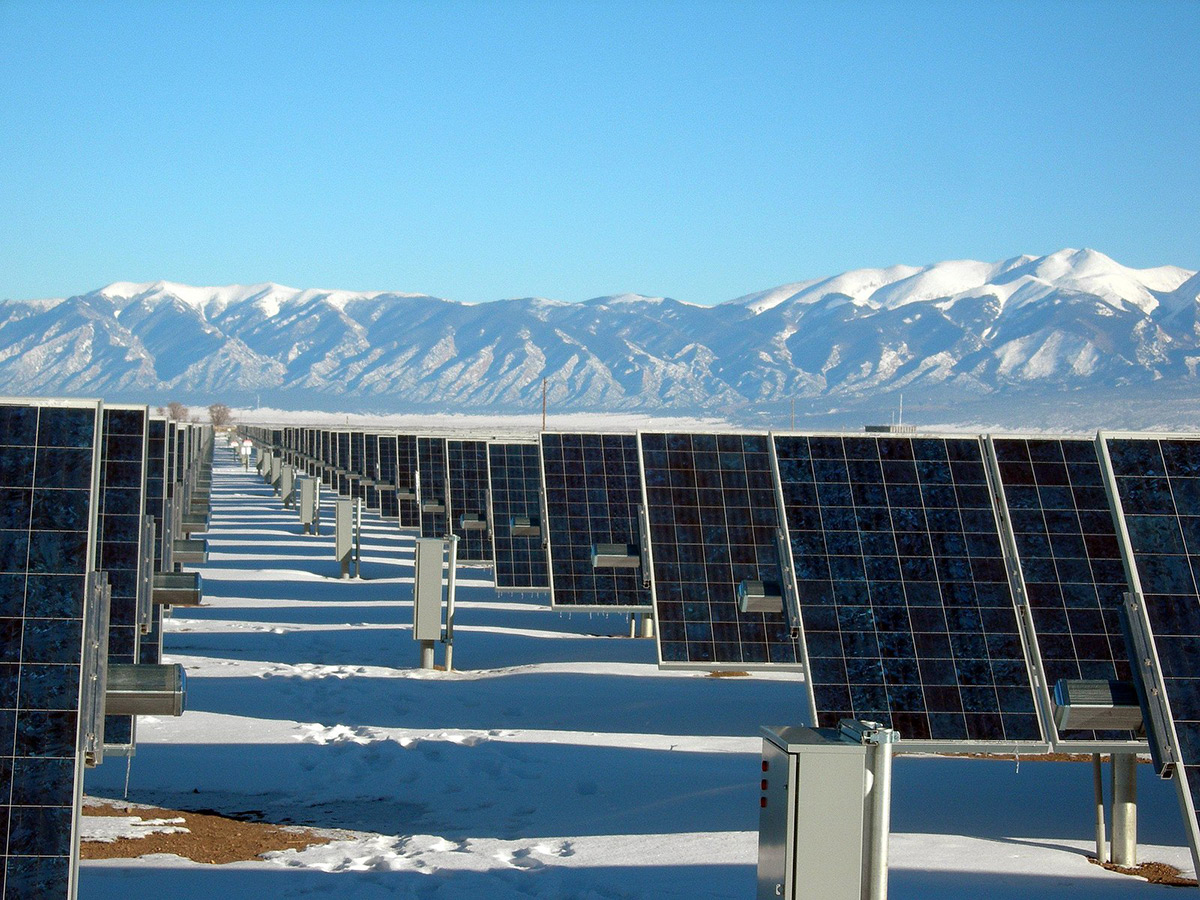April 22, 2020 is the 50th Earth Day. The theme chosen by the Earth Day Network is, not surprisingly, climate action, deemed the most pressing issue of our time, representing the most critical challenge to humanity and the ecosystems that support all life on our planet.

It’s worth looking back at the history of Earth Day to evaluate our progress, as well as the new challenges that confront us. In 1970, 20 million Americans celebrated the first Earth Day to raise concerns about air and water pollution, pesticides, and toxic waste. In the wake of that event, President Richard Nixon created the US Environmental Agency, while many other countries followed suit with their own environmental protection measures.
The first Earth Day led to reforms that restored important ecosystems

The new environmental consciousness resulted in the passage of the Clean Water Act and Clean Air Act, updated pollution control policies that have had a major positive impact on our ecosystems.
All over the US, major rivers and small waterways have been successfully restored, allowing for recreation and the return of native species. Atlantic sturgeon — and humpback whales — have rediscovered the Hudson River to the delight of many New Yorkers. In 1969, Cleveland’s Cuyahoga River oozed with toxic pollution and occasionally burst into flames. Back then, the river was effectively dead, utterly devoid of fish and other life. Now, a rejuvenated Cuyahoga boasts 70 species of fish and serves as a mecca for kayakers and paddle board enthusiasts.
There have also been clean air victories. According to the Environmental Protection Agency, American cities have reduced particulate pollution, a serious threat to public health, by 70 percent in past decades. The clean air gains have held fast despite continuing growth in our economy and population.
These achievements prove that with a little policy and a lot of effort, environmental remediation can become reality. The Earth’s ecosystems evidently have a powerful capability for self-healing.
Global warming — the mother of all pollution challenges

Then in the early 1980s, amidst the first real progress on environmental goals, a new threat emerged. Though a few scientists had been publishing papers about anthropogenic warming for several decades, strong scientific consensus emerged forty years ago that greenhouse gases in the Earth’s atmosphere were trapping heat. The data showed that global temperatures were increasing more rapidly than at any other time in planetary history. The main culprit was fossil fuel combustion that released C02 into the atmosphere, joined by methane, refrigerants and other pollutants. The most guilty economic sectors were electric power generation and transportation, fueled by coal and petroleum. Food production, industrial processes, and the heating and cooling of inefficient buildings were also contributing to greenhouse gas emissions. Even the garbage in our landfills was off-gassing and sending methane — one of the most dangerous pollutants — into the atmosphere.
As concern about global warming grew, it was obvious that the first step in curbing greenhouse emissions would be to reform power generation, specifically the thousands of coal plants that produced electricity across the US and most other countries. At the time, coal-fired electricity was deemed to be “cheap.” It took decades to acknowledge the health costs attributed to coal, while the financial damage caused by coal-induced global warming remains to be calculated.
Rapid deployment of renewable energy is already transforming electricity generation
As we mark the 50th anniversary of Earth Day, it’s crucial to take stock of the dangers we face from global warming. But, it’s also important to acknowledge the remarkable speed at which renewable energy — so far the primary antidote to global warming — is transforming the electric power industry.
In just a few short decades, plummeting costs of wind, solar, and now battery power have made renewable energy a viable economic competitor with coal and natural gas, emerging finally as the preferred choice for new power generation. Now, for utilities all over the world, solar and wind are the clear winners for financial reasons alone. According to a 2019 report released by the International Energy Agency (IEA), spending on renewables has exceeded spending on carbon-based energy resources for the fourth year in a row, with solar PV now leading the way.
Meanwhile, companies, individuals and governments are investing in their own energy generation. The IEA says that “distributed solar PV is set to more than double in capacity in the next five years, accounting for almost half of all solar PV growth.”
In the US, renewable energy is also the fastest growing energy resource, increasing 100 percent from 2000 to 2018, now making up 17 percent of our power generation (hydro and wind are the biggest contributors), according to the Center for Climate and Energy Solutions (C2ES). C2ES is projecting that solar energy will climb from 11 percent of US energy production today to 48 percent in 2050.
In short, renewable energy has been adopted so widely in the US utility industry that transportation has eclipsed power generation as the key culprit in greenhouse gas emissions, according to the US Energy Information Administration. That sets the stage for evolution of the fast-growing electric vehicle market, which is destined for a 21 percent compound annual growth rate (CAGR) between now and 2026. However globally, the electric power sector is still the biggest C02 emitter.
Renewable energy jobs increased to 11 million worldwide in 2019

Another important trend in recent decades is the emergence of stable, high-paying jobs in renewable energy, something that bodes well for the sustainability of an industry now emerging in 160 countries. According to the International Renewable Energy Agency (IRENA), the solar job market is diversifying. In a 2019 report, IRENA says emerging markets like Vietnam, Malaysia, and Thailand are growing the fastest, challenging established leaders such as China, the US, India, and Brazil.
Despite ups and downs in the renewables market that are due to trade policies and a political roller coaster in many countries, the good news is renewable energy jobs are creating high-wage employment for increasing numbers of people, eclipsing job losses in oil production and coal mining. In its 2020 Clean Jobs America report, E2 (Environmental Entrepreneurs) says that in the US, the 3.4 million people who work in clean energy now outnumber fossil fuel workers three to one.
Can we transform our economy fast enough to avoid catastrophic climate change?
Despite rapid clean energy gains over the past few decades, global carbon emissions are continuing their upward trajectory. New middle class populations ballooning in countries like China, Brazil, and India — want amenities such as cars, air-conditioning and heating, energy-intensive communications, and other trappings of modern life.
According to the International Energy Agency, “The momentum behind clean energy is insufficient to offset the effects of an expanding global economy and growing population.” We are not on track to meet our obligations under the Paris Agreements or UN Sustainable Development Goals, and many governments continue to subsidize fossil fuels, according to the international policy network REN21.
Meanwhile, fossil fuel producers and utilities continue to spend hundreds of millions of dollars to influence public opinion and delay or block progress on climate change.
Scientists say it’s not too late to reverse global warming trends, but the consensus among experts is success will require international collaboration.
Focus on solutions that are working
As we face the remainder of a very unusual year, HOMER Energy will continue to pursue our mission of helping people around the world develop financially sound and technically robust distributed energy systems. On the 50th anniversary of Earth Day, we celebrate the phenomenal progress our customers and partners have made incorporating clean, renewable resources into a rapidly growing number of energy projects around the world. Whether we are contributing to energy access in remote, subsistence villages, or helping design the most sophisticated urban microgrids, we are honored to provide the tools, standards, and know-how to make renewable energy development safer, easier, and more economically efficient.
Looking back at the remarkable achievements made since the first Earth Day 50 years ago, we are proud of the rapid establishment of a worldwide renewable energy industry that shot past every goal ever set and defied all gloomy predictions. We are hopeful that clean energy will continue to mitigate climate change, and play an even larger role in the future.
Notwithstanding all the other work that needs to be done, continuing to transform the energy sector is key to the sustainability of our planet. We believe we can do this. Now it’s time to get to work.
HOMER software delivers industry-leading system simulations, optimization, sensitivity analysis and best-in-class storage models across three categories of hybrid systems: islanded microgrids, grid-connected distributed generation, and front-of-the-meter utility-scale storage and hybrid systems.
Learn More
Visit UL Solutions HOMER® software to learn more about HOMER Pro, HOMER Grid and HOMER Front modeling and optimization software, download complimentary trials, sign up for training and explore our extensive knowledge base and other support documents.
